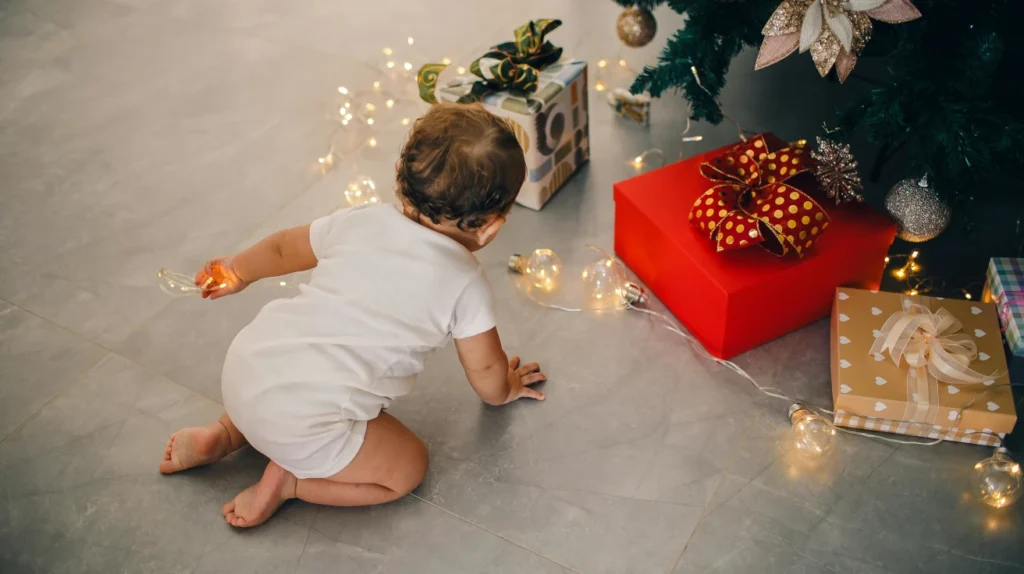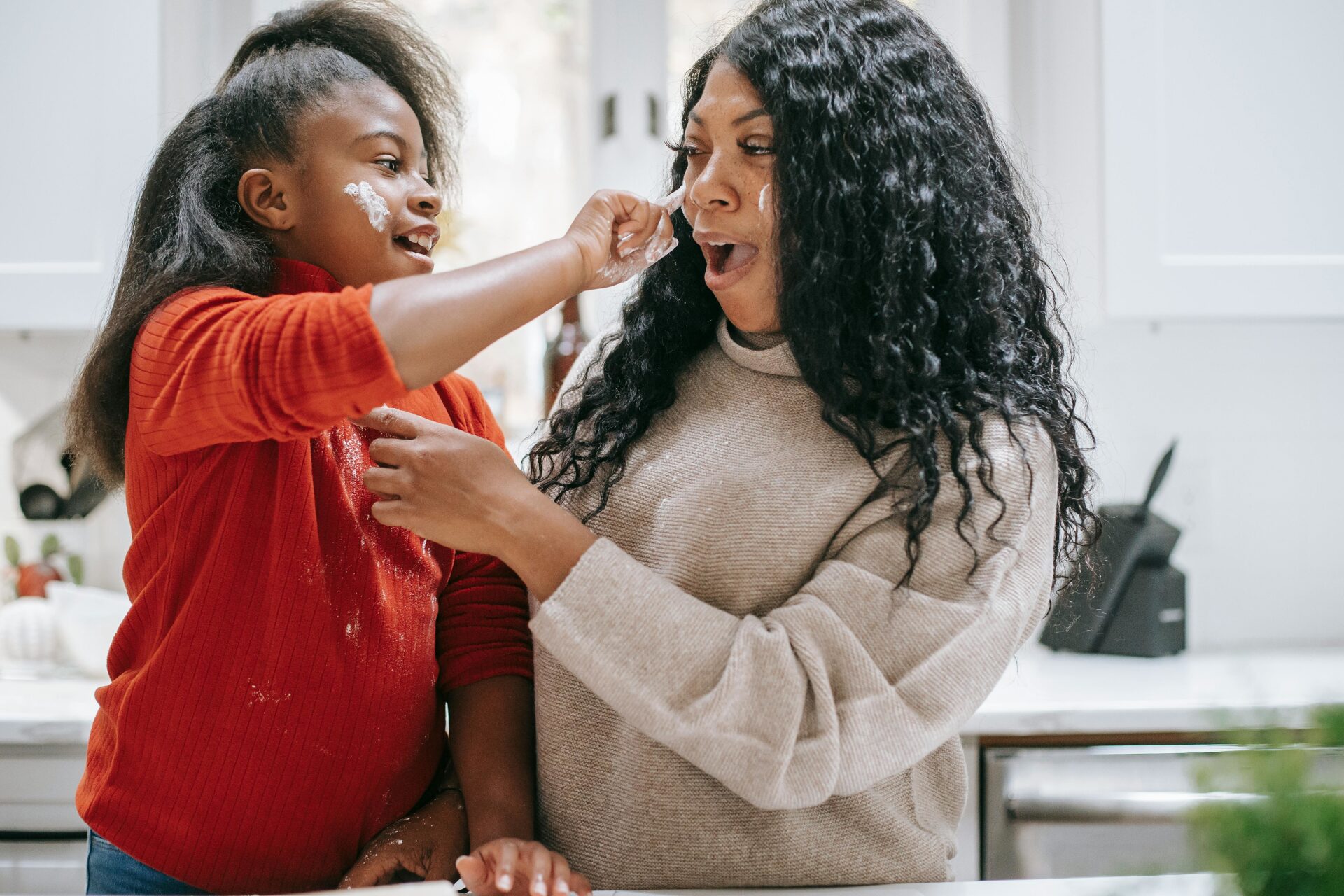A Mom’s Guide to Creating a Safe Haven for Your Little One
Congratulations, you’ve made it through the newborn phase (or maybe you’re still in it – sending coffee and virtual hugs!). As your little one grows, they’re starting to explore the world around them with all kinds of curiosity and a serious lack of spatial awareness. This is an exciting time, full of first steps, giggles, and… a whole lot of potential hazards lurking in your very own home.
Suddenly, those cute decorations, accessible cleaning supplies, and even the furniture you carefully selected become potential dangers. That’s where childproofing your home comes in. Think of it as your superpower to create a safe and stimulating environment where your child can explore and learn without constantly risking a bump, bruise, or worse.
Childproofing your home isn’t about turning your home into a sterile, padded cell. It’s about proactively identifying potential risks and taking simple steps to minimize them. It’s about giving you peace of mind so you can actually enjoy watching your little explorer discover the world. So, grab a cup of tea (or something stronger, we won’t judge!), and let’s dive into the world of childproofing your home.
At What Age Should You Start Childproofing? The Sooner, the Better!
This is a question many new parents ask, and the answer is almost always the same: start childproofing before your baby becomes mobile. Seriously! While it might seem early to babyproof when your little one is still happily stationary, babies develop faster than you think. One minute they’re just lying there, the next they’re rolling, scooting, crawling, and pulling themselves up on everything. When you start childproofing your home early it gives you plenty of time to identify and mitigate risks.
Pre-Crawling Stage (0-6 Months)
Even before your baby starts moving, it’s a good idea to start thinking about potential hazards. Begin with simple things like:
- Securing Furniture: Anchor tall furniture like bookshelves, dressers, and TVs to the wall. Babies can pull themselves up on these, and they can topple over easily, causing serious injury.
- Covering Electrical Outlets: Install outlet covers or safety outlets to prevent curious fingers from getting a shock.
- Stair Gates: If you have stairs, start researching and considering which gates will work best for your space.
- Clearing Low Surfaces: Remove any small objects, decorations, or breakables from coffee tables, side tables, and other low surfaces. These are choking hazards and irresistible temptations for little hands.
- Cord Control: Shorten or tie up blind cords and other dangling cords to prevent strangulation hazards.
Crawling and Cruising Stage (6-12 Months)
This is when childproofing becomes crucial. Your baby is now mobile and exploring everything within reach. Double down on the steps above and add these to your list:
- Cabinet and Drawer Locks: Install locks on cabinets and drawers containing cleaning supplies, medications, sharp objects, or anything else that could be dangerous.
- Toilet Locks: Prevent your little one from playing in the toilet (trust us, you don’t want this!) with a toilet lock.
- Edge and Corner Guards: Soften sharp edges and corners on furniture with edge and corner guards.
- Kitchen Safety: Keep knives, sharp utensils, and hot pots and pans out of reach. Use stove knob covers to prevent your child from turning on the stove.
- Bathroom Safety: Never leave your child unattended in the bathtub, even for a second. Set your water heater to a safe temperature (around 120°F) to prevent scalding.
Toddler Stage (12+ Months)
Your child is now walking, climbing, and getting into everything! Continue to reinforce your childproofing efforts and be prepared to adapt as your child learns new skills. Make sure to engage your child in the process of childproofing your home by explaining safety reasons.
- Window Guards: Install window guards to prevent falls from windows.
- Pool Safety: If you have a pool, ensure it’s properly fenced and gated. Never leave your child unattended near the pool.
- Ongoing Assessment: Regularly assess your home for new hazards as your child grows and develops.



Tips and Tricks for Childproofing Your Home: A Room-by-Room Guide
Okay, let’s break down childproofing by room. Remember, every home is different, so tailor these tips to your specific needs and layout.
The Living Room:
- Furniture Anchors: As mentioned before, this is a must-do!
- Cord Management: Tame those tangled cords behind the TV and other electronics. Use cord concealers or cable ties to keep them out of reach.
- Fireplace Safety: If you have a fireplace, use a fireplace screen or guard to prevent your child from touching the hot surface.
- Plants: Move houseplants out of reach or choose non-toxic varieties. Some plants can be poisonous if ingested.
- Coffee Table Alternatives: Consider replacing your coffee table with a soft ottoman or a child-friendly alternative with rounded edges.
The Kitchen:
- Cabinet and Drawer Locks: Essential for keeping cleaning supplies, sharp objects, and other hazards out of reach.
- Stove Knob Covers: Prevent your child from turning on the stove.
- Oven Safety: Keep the oven door closed and locked when not in use.
- Appliance Safety: Unplug small appliances when not in use and store them out of reach.
- Trash Can Security: Use a trash can with a secure lid or store it in a locked cabinet.
- Knife Block Placement: Ensure the knife block is out of reach, preferably in a high cabinet.
The Bathroom:
- Toilet Lock: Prevent your child from playing in the toilet.
- Bath Tub Safety: Never leave your child unattended in the bathtub. Use a non-slip mat to prevent falls.
- Medication Storage: Store all medications in a locked cabinet or container, out of reach of children.
- Hair Dryer and Curling Iron Safety: Unplug and store these appliances out of reach when not in use.
- Water Temperature: Set your water heater to a safe temperature (around 120°F) to prevent scalding.
The Bedroom:
- Crib Safety: Ensure your crib meets current safety standards. Avoid using crib bumpers, which can be a suffocation hazard.
- Window Safety: Install window guards to prevent falls from windows.
- Toy Storage: Use toy boxes with soft-closing lids to prevent pinched fingers.
- Nightlight: Use a nightlight to help your child see in the dark and prevent falls.
- Changing Table Safety: Always keep one hand on your baby when they are on the changing table.
The Stairs:
- Stair Gates: Install stair gates at the top and bottom of the stairs to prevent falls. Choose gates that are easy for adults to open but difficult for children.
- Handrail Safety: Ensure the handrail is secure and easy for your child to grip.
- Carpeted Stairs: Consider carpeting the stairs to provide a softer landing in case of a fall.



Beyond the Basics: Thinking Like a Toddler
One of the best ways to childproof your home is to get down on your hands and knees and see the world from your child’s perspective. What looks interesting? What can you reach? What can you pull down?
- Identify Potential Hazards: Look for small objects that could be choking hazards, sharp edges and corners, dangling cords, and anything else that could be dangerous.
- Test Your Childproofing: Once you’ve childproofed an area, test it to make sure it’s effective. Can you easily open the cabinet locks? Can you pull the furniture over?
- Be Consistent: Make sure everyone in your household is aware of the childproofing measures and follows them consistently. This includes grandparents, babysitters, and other caregivers.
- Teach Your Child: As your child gets older, teach them about safety rules and potential hazards. Explain why they shouldn’t touch certain things or go into certain areas.
Product Recommendations
Ultimately, childproofing your home is about ensuring a safe space for your little ones to grow.
- Cabinet Locks: Magnetic locks are a popular choice because they’re invisible from the outside and easy for adults to use.
- Outlet Covers: Self-closing outlet covers are a convenient option.
- Stair Gates: Pressure-mounted gates are easy to install, but hardware-mounted gates are more secure for the top of the stairs.
- Edge and Corner Guards: Choose guards made from soft, non-toxic materials.
- Furniture Anchors: Anti-tip furniture straps are a simple and effective way to secure furniture to the wall.
Conclusion: Childproofing Your Home is Essential
Childproofing your home is an ongoing process, not a one-time event. As your child grows and develops, you’ll need to adapt your childproofing efforts to meet their changing needs. It might seem overwhelming at first, but remember that every little bit helps.
By childproofing your home, you’re creating a safe and stimulating environment where your child can explore and learn without constantly risking injury. And more importantly, you’re giving yourself peace of mind so you can actually enjoy this precious time with your little one.
So, take a deep breath. You’ve got this! And remember, it’s okay to ask for help. Enlist your partner, family, or friends to help you with childproofing your home. After all, it takes a village! Now go forth and create a safe haven for your little explorer! You’re doing an amazing job!



FAQ
How do you go about childproofing your home?
Install safety gates at stairways and doorways.
Use outlet covers on electrical outlets.
Secure heavy furniture to the wall to prevent tipping.
Lock away cleaning supplies and medications in cabinets.
Remove small objects that can be choking hazards.
Use corner protectors on sharp furniture edges.
Keep cords and wires out of reach or use cord clips.
Install window locks or guards to prevent falls.
Use non-toxic materials for toys and furniture.
Supervise children in potentially dangerous areas.
What age should you childproof your house?
Babyproof your house when your baby starts crawling, typically around 6 to 10 months of age.
How much does it cost to childproof a house?
The cost to babyproof a house typically ranges from $100 to $1,000, depending on the size of the home and the extent of the babyproofing measures required.
Can you pay someone to childproof your house?
Yes, you can hire a professional to baby-proof your house.
*You may also like: 10 Time Saving Hacks for Busy Moms



